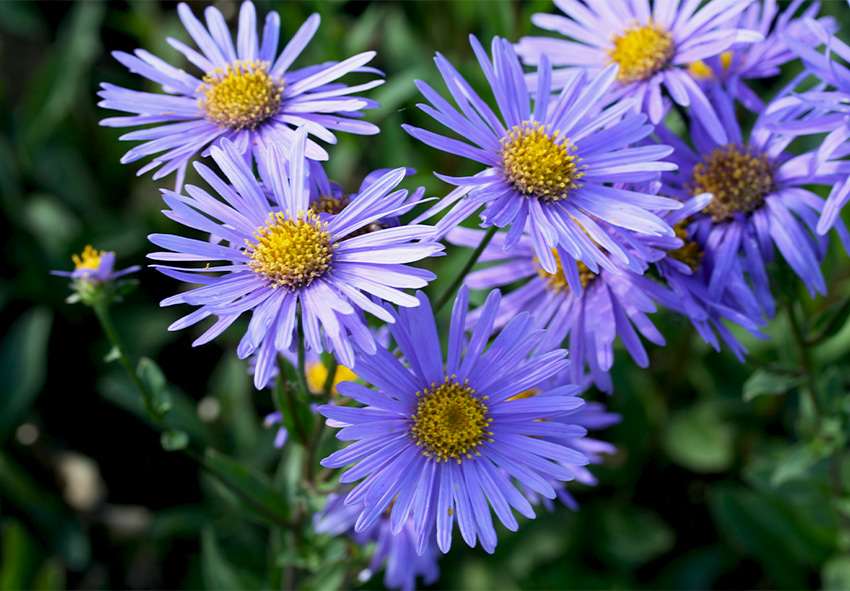Asters are a favorite among gardeners for their vibrant, daisy-like blooms that brighten up late summer and fall gardens. These hardy perennials offer an excellent source of nectar for pollinators like bees and butterflies when other flowers begin to fade. In this guide, you’ll learn everything about planting asters, how to grow them successfully, and tips for year-round care. Our gardening blog is a perfect place to find all the information you need!
Understanding Asters
Asters belong to a diverse group of flowering plants known for their star-shaped blossoms and extended blooming season. With hundreds of varieties, these flowers add texture, height, and brilliant color to garden beds and borders. They’re not only beautiful but also low-maintenance and pollinator-friendly.
Types of Asters
Asters come in a variety of species and hybrids, each offering unique bloom shapes, sizes, and seasonal interest. Choosing the right type for your garden depends on your climate, desired bloom time, and overall landscape design:
- New England Aster (Symphyotrichum novae-angliae): Known for its tall growth and vibrant purple or pink flowers, this aster blooms in late summer to fall and is a favorite of pollinators.
- New York Aster (Symphyotrichum novi-belgii): Slightly shorter than New England aster, this variety has dense, bushy foliage and blooms in shades of blue, pink, and white.
- Wood Aster (Eurybia divaricata): A woodland native with small white flowers and dark stems, perfect for partial shade and naturalized areas.
- Smooth Aster (Symphyotrichum laeve): Features smooth, hairless leaves and pale lavender blooms; it’s heat-tolerant and ideal for dry gardens or prairie-style landscapes.
- Calico Aster (Symphyotrichum lateriflorum): Produces small white flowers with reddish centers along branching stems, creating a delicate, airy appearance in the fall garden.
- Alpine Aster (Aster alpinus): A low-growing, early-blooming species great for rock gardens and borders, with purple or pink flowers that appear in late spring.
Asters as Perennials
As perennials, asters return year after year with minimal upkeep. They develop stronger root systems over time, which supports abundant flowering. Asters also tend to spread slowly, forming clusters that can be divided and shared or repositioned in the garden.
When and Where to Plant Asters
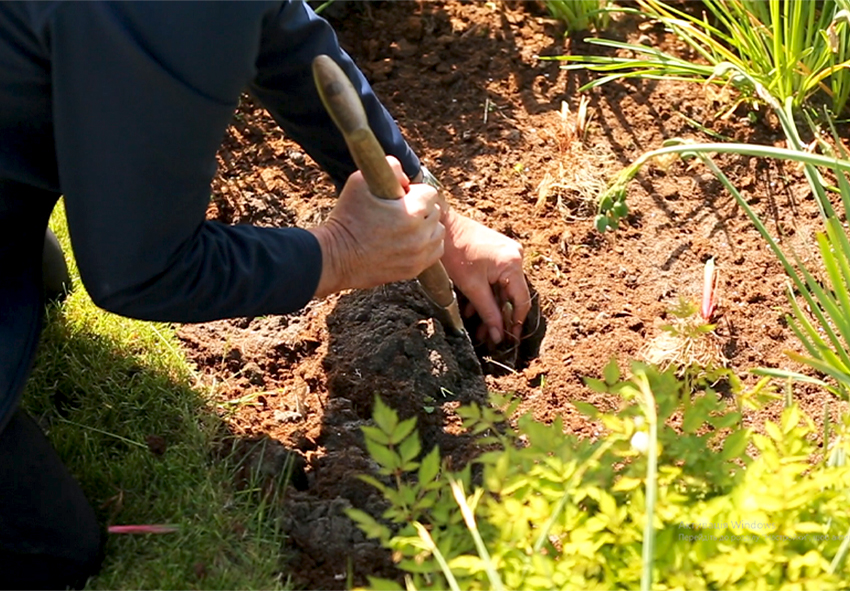
The success of your aster garden begins with proper planting time and location. Asters need the right environmental conditions to establish well and produce dense, colorful blooms.
Best Time to Plant Asters
Plant asters in early spring or late fall, depending on your local climate. Spring planting allows them to establish roots before the hot summer, while fall planting works well in mild regions. You can also start seeds indoors 6–8 weeks before the last frost.
Choosing the Right Location
Asters thrive in locations that receive full sun, though some varieties tolerate partial shade. Choose a spot sheltered from strong winds to protect their stems. Ensure the area has good air circulation to reduce the risk of mildew.
Soil Requirements
Asters prefer well-draining, loamy soil with a neutral to slightly acidic pH (6.0–7.0). If your soil is heavy clay, amend it with compost or sand to improve drainage. Raised beds or mounded rows can also enhance water flow.
How to Plant Asters
Proper planting lays the foundation for healthy, blooming asters. Whether you start from seed or purchase nursery-grown plants, careful planting techniques ensure success. Giving asters a strong start helps them adapt more easily to garden conditions and encourages early growth. Pay attention to spacing and soil quality, as these factors greatly impact their long-term health.
Starting Asters from Seed
Sow seeds indoors in late winter or directly into the ground after the last frost. Use a seed-starting mix and keep the soil consistently moist. Transplant the seedlings outdoors once they are 3–4 inches tall and the danger of frost has passed. For better germination, lightly press seeds into the soil without covering them, as they need light to sprout. Thin out weaker seedlings to avoid overcrowding.
Transplanting Nursery Asters
Dig a hole slightly larger than the root ball and plant your aster at the same depth it was growing in its container. Space plants 12–18 inches apart to allow good airflow and room for growth. Press the soil gently around the roots and water thoroughly. Mulch around the base to retain moisture and suppress weeds. Avoid disturbing the roots too much when transplanting to prevent shock.
Watering After Planting
Water immediately after planting to help the soil settle and eliminate air pockets. Keep the soil consistently moist for the first few weeks. Avoid overwatering, as soggy soil can lead to root rot. Check moisture levels by touching the soil 1–2 inches below the surface. If the soil feels dry, it’s time to water again.
Aster Flower Care and Maintenance
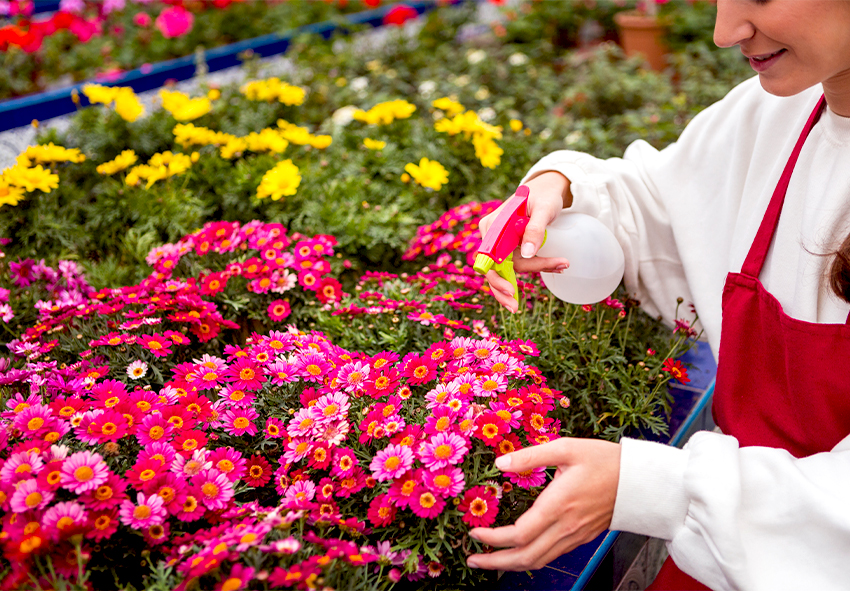
Caring for asters throughout the growing season ensures long-lasting blooms and healthy foliage. A regular maintenance routine keeps your plants looking their best. Well-maintained asters are more resistant to pests and diseases. Plus, healthy plants tend to bloom more profusely and for a longer period. Here are some tips for you.
Watering and Feeding Asters
Water deeply once a week, more frequently during dry spells. Asters don’t like sitting in water, so check the soil before watering. Apply a balanced fertilizer in early spring and again mid-season to promote growth and blooming. Avoid high-nitrogen fertilizers, which encourage foliage at the expense of flowers. Mulching can also help retain soil moisture and regulate temperature.
Deadheading and Pruning
Deadhead spent blooms regularly to encourage more flowers and keep the plant tidy. Prune asters in early summer by pinching back the stems to promote bushier growth. In late fall, cut back dead stems to the ground to prepare for winter. Regular pruning reduces disease risk and encourages airflow. Removing old blooms also prevents self-seeding, keeping your garden neat.
Dividing Asters
Every 2–3 years, divide asters in early spring or fall to rejuvenate the plants and control spreading. Dig up the clump, separate it into sections with healthy roots, and replant them in prepared soil. Water the new divisions well and mulch to reduce transplant stress. Dividing also improves flower production and prevents overcrowding. It’s a great way to multiply your asters for free.
Common Aster Growing Problems
While asters are relatively low-maintenance, they can occasionally encounter issues. Spotting and addressing these problems early helps maintain plant health:
- Pests that Affect Asters: Aphids and spider mites are the most common pests. A strong water spray or neem oil usually controls them. Keep the garden clean to deter beetles and caterpillars.
- Aster Diseases: Powdery mildew, leaf spot, and rust can affect asters, especially in humid conditions. Water at the base to avoid wetting foliage and provide good air circulation. Fungicidal sprays can treat serious infections.
- Yellowing or Wilting Leaves: Yellow leaves can indicate overwatering, poor soil drainage, or nutrient deficiencies. Ensure the soil dries slightly between waterings and apply compost or a low-nitrogen fertilizer to restore vigor.
Companion Planting with Asters
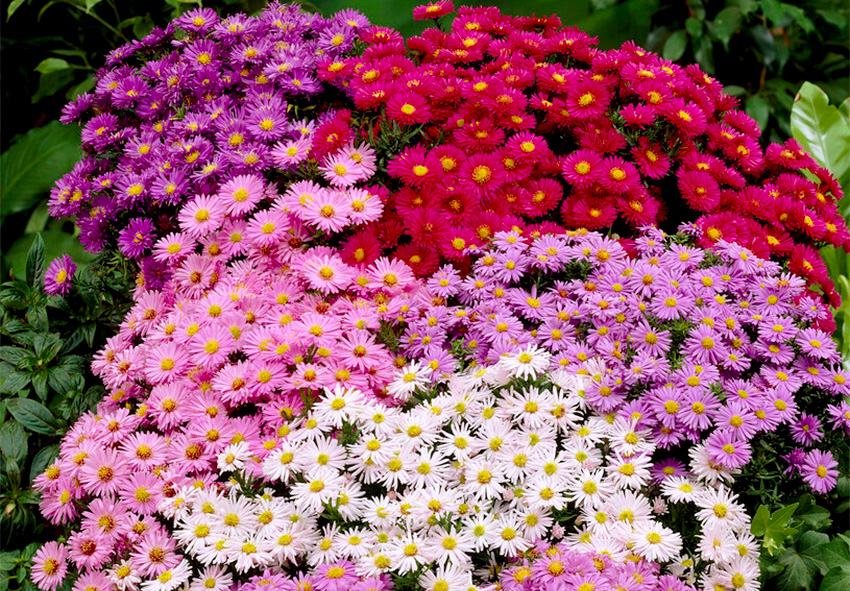
Pairing asters with the right plants enhances garden aesthetics and supports pollinators. Choosing compatible companions helps maintain plant health, improves bloom displays, and encourages beneficial insect activity. This thoughtful planting strategy also reduces pest issues and maximizes space efficiently.
Best Companion Plants
Pairing asters with compatible plants not only enhances your garden’s visual appeal but also encourages biodiversity and supports pollinators. The following plants complement asters in color, texture, and bloom time, making them ideal companions for a balanced, thriving garden:
- Black-Eyed Susans (Rudbeckia): Their bold yellow blooms contrast beautifully with asters’ purple and pink shades. They share similar growing conditions and bloom around the same time.
- Goldenrod (Solidago): Often blooming alongside asters, goldenrod adds a vibrant golden touch and supports bees and butterflies in late summer and fall.
- Sedum (Stonecrop): These drought-tolerant plants offer fleshy leaves and clusters of late-season flowers, providing a great textural contrast to asters.
- Ornamental Grasses: Varieties like switchgrass or little bluestem add height and movement. Their soft, feathery plumes look stunning beside vibrant aster blooms.
- Coneflowers (Echinacea): These native perennials share the same care needs and attract similar pollinators. Their long-lasting flowers pair well with asters in mixed borders.
- Joe Pye Weed (Eutrochium): A tall, striking native plant with mauve-pink flowers that blends well with asters while offering nectar for butterflies.
- Coreopsis: These sunny, daisy-like blooms flower over a long season and complement asters with their cheerful yellow tones.
Plants to Avoid
Avoid planting asters with aggressive spreaders or large shrubs that compete for nutrients and sunlight. Monitor neighboring plants to ensure asters are not crowded out or shaded. Plants like mint or overly tall perennials may overwhelm asters and inhibit their growth. Ensure adequate airflow and space to prevent disease and encourage optimal blooming.
Encouraging Fall Blooms and Pollinators
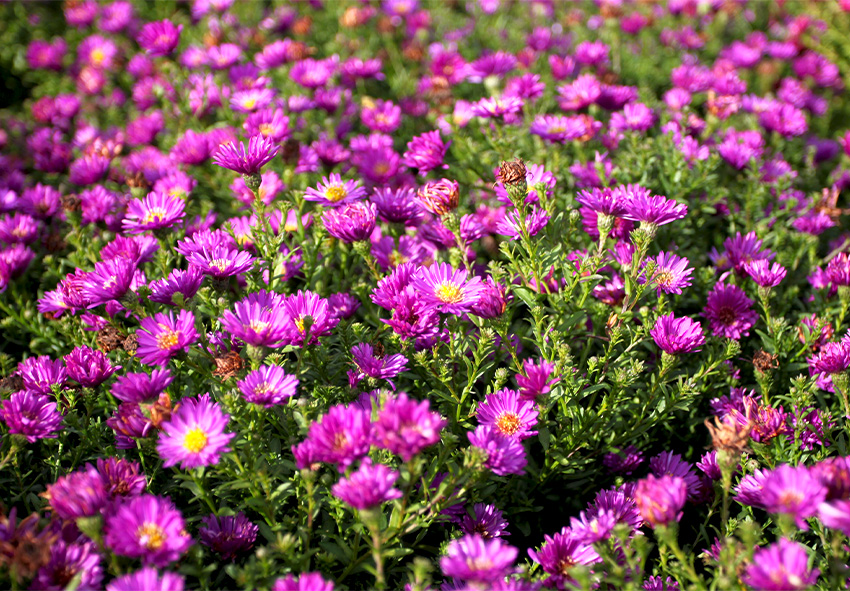
Asters are valuable for fall color and late-season nectar. With a few care techniques, you can extend their vibrant display and attract helpful insects to your garden. These hardy plants are among the last bloomers of the season, making them vital for garden interest and ecosystem support.
Extending the Bloom Period
Pinch back plants in early summer to delay blooming and create a fuller shape. Choose different varieties with staggered bloom times to extend the flowering season into late fall. Deadheading also encourages continual blooming. Consistent watering and feeding will also support prolonged bloom cycles. Mulching around the base helps maintain soil moisture and temperature stability.
Supporting Bees and Butterflies
Asters are vital for pollinators when other blooms have faded. Select native varieties to attract local insects. Create clusters of asters to provide a dense nectar source and shelter. Avoid chemical pesticides that can harm beneficial insects. Including a water source nearby can further support bees and butterflies in your garden.
Conclusion
Asters are a smart, stunning choice for gardeners who want to add late-season color and support pollinators. With proper planting, watering, and maintenance, these perennials will thrive for years to come. Explore our online store for high-quality aster seeds, plants, and garden tools to start growing your vibrant aster garden today!
Frequently Asked Questions (FAQs) about Asters
1. When is the best time to plant asters?
The ideal time to plant asters is in early spring or fall. Spring planting gives them time to establish before blooming, while fall planting works well in mild climates. Just ensure they’re in the ground at least 6 weeks before the first hard frost.
2. Do asters need full sun or partial shade?
Asters thrive best in full sun, needing at least 6 hours of direct light daily. While they can tolerate partial shade, too little sunlight can reduce bloom production and lead to leggy growth. Choose a sunny, well-drained location for the best results.
3. How often should I water asters?
Water asters deeply once a week, especially during dry periods. They prefer consistent moisture but don’t like soggy soil. Well-drained soil helps prevent root rot. Newly planted asters may need more frequent watering until they establish strong root systems.
4. Can I order Holland asters from your online store?
Yes, our online store Dutch-bulbs.com offers a wide selection of asters, including some varieties originating from the Netherlands, renowned for their quality and beauty. Explore our collection to find the perfect aster varieties for your garden or landscaping projects.
5. What causes asters to stop blooming early?
Asters may stop blooming early due to stress, overcrowding, or insufficient sunlight. Deadheading spent flowers and dividing plants every 2–3 years can help. Also, feeding with a balanced fertilizer in early summer encourages longer blooming periods.
Published: 01.07.2025

